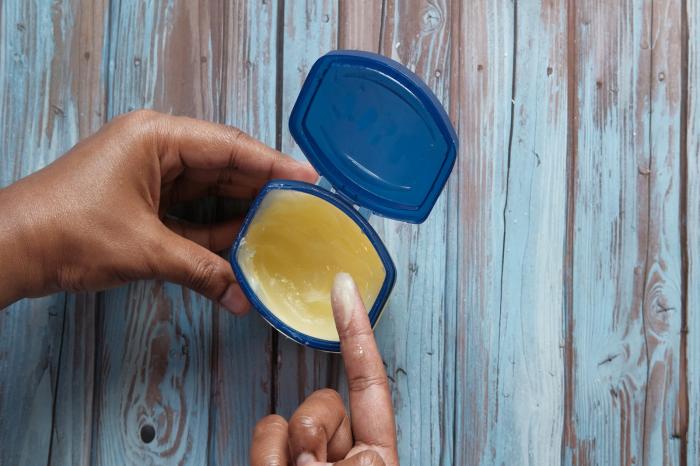Diaper rash is a common issue for many parents, and choosing the right treatment can be challenging. Petroleum jelly, often known as Vaseline, is a product many parents might consider for soothing diaper rash. This article will explore the use of petroleum jelly for diaper rash, including its benefits, how it works, and considerations for its use.
Understanding Diaper Rash
Diaper rash is a skin irritation that affects the diaper area. It can be caused by several factors and can vary in severity.
a. Causes of Diaper Rash
Several factors can contribute to diaper rash, including:
Moisture: Prolonged contact with wet or soiled diapers.
Friction: Rubbing from the diaper or clothing.
Irritants: Ingredients in baby wipes or diapers.
Infections: Bacterial or fungal infections, such as yeast infections.
b. Symptoms of Diaper Rash
Common symptoms include:
Red, inflamed skin
Bumps, sores, or peeling
Discomfort or fussiness in the baby
What is Petroleum Jelly?
Petroleum jelly is a semi-solid mixture of hydrocarbons, often used as a moisturizer or protective barrier. It is known for its ability to lock in moisture and create a barrier on the skin.
a. How Petroleum Jelly Works
Petroleum jelly works by forming a thick, protective layer over the skin. This barrier helps to:
Lock in Moisture: Prevents skin from drying out.
Protect Skin: Shields the skin from irritants and moisture.
Promote Healing: Allows the skin to heal by keeping it hydrated.
Using Petroleum Jelly for Diaper Rash
Petroleum jelly can be a useful option for treating diaper rash. Here’s how it can help and what to consider.
a. Benefits of Petroleum Jelly for Diaper Rash
Petroleum jelly offers several benefits for treating diaper rash:
Creates a Barrier: Forms a protective layer that shields the skin from moisture and irritants.
Soothes Skin: Helps to reduce discomfort by keeping the skin hydrated and protected.
Prevents Further Irritation: By protecting the skin, it can help to prevent the rash from worsening.
b. How to Apply Petroleum Jelly
To use petroleum jelly for diaper rash, follow these steps:
Clean the Area: Gently clean the diaper area with water or a mild baby wipe. Pat the area dry with a clean cloth.
Apply a Thin Layer: Use your fingers to apply a thin layer of petroleum jelly over the affected area.
Reapply as Needed: Reapply petroleum jelly at each diaper change to maintain the protective barrier.
Considerations When Using Petroleum Jelly
While petroleum jelly can be effective, there are some considerations to keep in mind:
a. Potential Drawbacks
Not a Cure-All: Petroleum jelly does not address underlying causes of diaper rash, such as infections or severe irritation.
May Trap Moisture: In some cases, petroleum jelly might trap moisture against the skin if not used properly, which can worsen the rash.
May Affect Diapers: Petroleum jelly can be difficult to clean from cloth diapers, and it may reduce the absorbency of disposable diapers.
b. When to Avoid Petroleum Jelly
Consider avoiding petroleum jelly if:
Signs of Infection: If the diaper rash appears to be infected or has pus, consult a healthcare provider rather than using petroleum jelly.
Severe Rash: For severe or persistent rashes, it’s best to seek professional advice to determine the most appropriate treatment.
Sensitive Skin: If your baby has particularly sensitive skin, consult a healthcare provider before using petroleum jelly.
Alternative Treatments for Diaper Rash
If petroleum jelly is not suitable or effective, several alternative treatments can be used:
a. Diaper Rash Creams and Ointments
Over-the-counter diaper rash creams often contain ingredients specifically designed to treat and prevent diaper rash. Some options include:
Zinc Oxide: Forms a barrier on the skin to protect against moisture and irritants.
Petrolatum: Similar to petroleum jelly but may be combined with other soothing ingredients.
b. Anti-Fungal Creams
For rashes caused by fungal infections, anti-fungal creams can be effective. These may be available over-the-counter or by prescription.
c. Natural Remedies
Several natural remedies can help soothe and heal diaper rash:
Coconut Oil: Has anti-inflammatory properties and helps moisturize the skin.
Aloe Vera: Provides soothing relief and promotes healing.
Breast Milk: Contains antibodies that can help heal the rash.
d. Preventive Measures
Preventing diaper rash involves keeping the area clean and dry:
Frequent Diaper Changes: Change diapers regularly to avoid prolonged exposure to moisture.
Gentle Cleansing: Use mild, fragrance-free wipes or warm water and a soft cloth.
Air Time: Allow your baby some diaper-free time to let the skin breathe.
When to Consult a Healthcare Provider
If you are unsure about using petroleum jelly for diaper rash or if the rash does not improve, consult a healthcare provider. Seek professional advice if:
a. Persistent or Severe Rash
If the rash persists despite treatment or appears severe, it may require medical evaluation.
b. Signs of Infection
If there are signs of infection, such as pus, swelling, or fever, consult a healthcare provider promptly.
c. Uncertain Diagnosis
If you are unsure whether petroleum jelly or another treatment is appropriate, professional guidance can help you make the best decision for your baby’s health.
See also: What Can I Put On A Diaper Rash
Conclusion
Petroleum jelly can be a useful tool for treating diaper rash by providing a protective barrier and soothing the skin. However, it is important to use it correctly and be aware of its limitations. Petroleum jelly may not address all underlying causes of diaper rash and can sometimes trap moisture if not used properly.
For best results, combine petroleum jelly with other preventive measures and treatments as needed. If the rash does not improve or if there are signs of infection, consult a healthcare provider. With the right approach, you can effectively manage diaper rash and keep your baby comfortable.



